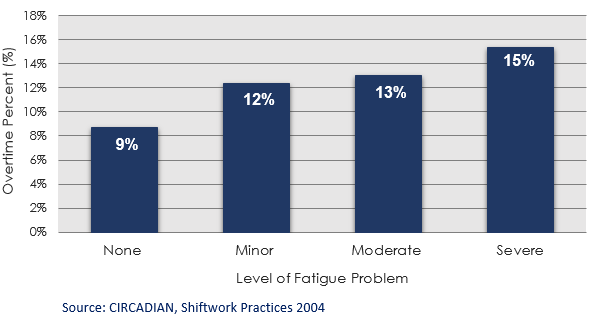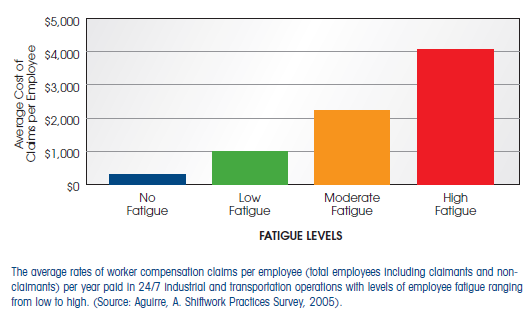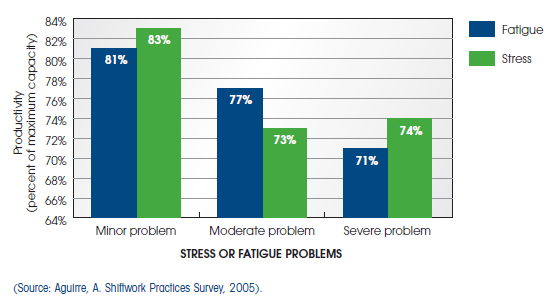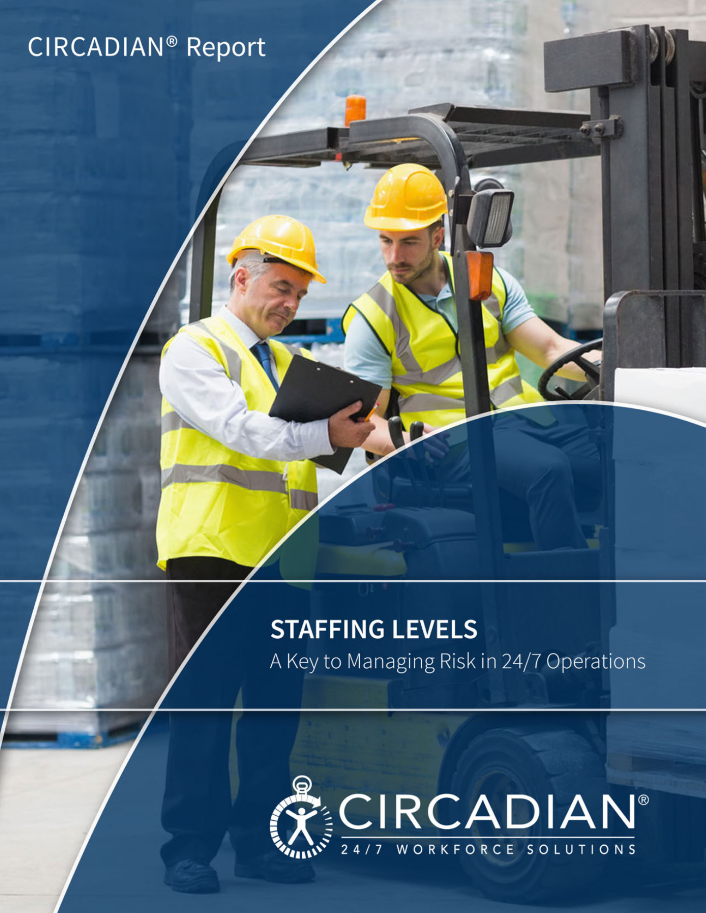In most 24/7 operations, there are a fixed number of positions to be filled on each shift. Because of this, staffing levels greatly impact overtime rates for employees.
Understaffing an operation requires employees to work additional hours originally allocated for off-duty activities, such as: rest, recovery, family activities, social events, and personal responsibilities.
While machines operate linearly, people do not. These off-duty activities are crucial for the emotional and physical well-being of the workers AND the bottom line of an operation.
Here are three reasons why lean staffing can be dangerous...
1. Staffing Levels are Related to Absenteeism Rates
Based on CIRCADIAN's 2014 Shiftwork Practices data, we found that the "leaner" operations (i.e. reduced staffing levels) reported higher absenteeism rates (Figure 1).
Interestingly, over 50% of all unscheduled absences are due to either: personal needs, stress, or an entitlement mentality (i.e. “I’ve earned it”) (Shiftwork Practices, 2014).
Figure 1. Staffing Levels & Absenteeism Rate

2. Fatigued Workers Cost More in Worker’s Compensation
As workers reallocate their off-duty time towards work, their fatigue levels often rise due to the additional labor and reduced sleep opportunity (Figure 2).
Figure 2. Overtime Levels & Fatigue Problems
ÂÂ 
Fatigued workers exhibit up to 4x the worker’s compensation costs as compared to non-fatigued workers (Figure 3). A recent meta-analysis of 27 observational studies found that sleep problems increase the risk of workplace injuries by 62 percent (Uehli et al., 2014).
Figure 3. Fatigue Levels & Worker’s Compensation

3. Stress & Fatigue are Productivity Killers
Severe stress and fatigue problems have been found to reduce worker productivity by up to 10% (Figure 4).
Stress and fatigue can be influenced by a variety of factors; however, operations with leaner staffing levels more frequently reported problems with severe stress and fatigue among shift workers than operations that were adequately staffed (Shiftwork Practices, 2014).
Figure 4. Reduction in Productivity as a Function of Stress & Fatigue*
 The Conclusion…
The Conclusion…
It’s clear through this body of research that workload-staffing imbalances need to be addressed to reduce excess costs, safety incidents, and worker fatigue.
To learn more about analyzing your staffing level, download our free white paper:
Staffing Levels
Managing Risk in 24/7 Operations




